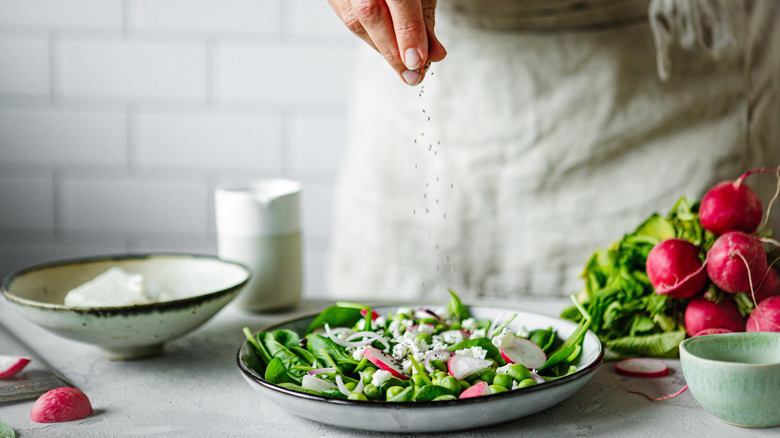Are Radish Greens Edible?
Radishes are a delicious and versatile vegetable that can be tossed in salads, used to upgrade coleslaw, or enjoyed on their own as a healthy snack. However, a mistake many people make with radishes is only using the root and throwing away the greens. While you might not know it if you've never tried them before, radish greens are perfectly safe to eat, and they're totally tasty.
The greens from any type of radish can be eaten, and their maturity plays a major role in how they taste. For instance, greens from a mature radish plant can have a slightly bitter taste, while younger greens are much more mild. Greens from mature plants can also be rather tough when they're raw. However, this can be tempered by cooking them.
Moreover, radish greens are surprisingly nutritious and contain more vitamin C and fiber than their roots. They are also a good source of potassium, magnesium, iron, vitamin K, and protein. Additionally, radish greens contain erucamide, which, in a 2018 study involving mice, was shown to possibly have a preventive effect against memory loss related to Alzheimer's. While more research is needed to confirm these findings in humans, the amount of nutrients alone makes radish greens a remarkably healthy food everyone should start enjoying.
Simple ways to start utilizing radish greens
If you've never used radish greens before, adding them to your diet might seem a bit daunting. Fortunately, radish greens can be used much the same way as spinach, and there's nearly no wrong way to utilize them. If you're preparing them raw, radish greens can be used on sandwiches and salads instead of lettuce. It will give these dishes an earthy spice and a bit of bitterness that can be balanced with some acid, like pickled vegetables, tomatoes, or acidic dressings. They also make a great topping for tacos by providing a nice bit of freshness.
Radish greens can also be used in a pesto the same way as basil, or they can be roasted with olive oil and seasoning to make a crunchy snack similar to kale chips. If you're a fan of pickled vegetables, the greens can even be pickled to create a tangy topping for everything from hotdogs to scrambled eggs. Of course, they can also be sauteed, stir-fried, added to soups, stews, and pasta sauces, or tossed into an omelet, air-fryer frittata, or quiche. Really, anything that benefits from greens can have radish greens.
How to store radish greens for maximum freshness
You might know the best way to store radishes, but if you're going to be using the greens separately, they'll need to be stored separately. This is because the greens are much more delicate than their roots and must be treated more gently to extend their shelf life.
When you bring home a bunch of radishes, the first thing you should do is remove the greens from the roots and wash both thoroughly to remove any dirt and residue. After drying the greens, they should be loosely wrapped in a paper towel and stored in either a ziplock bag or an airtight container. Stored like this, you can expect the greens to last about three days before they begin wilting and going bad.
Alternatively, radish greens can be blanched in hot water, dried, and frozen if you need them to last longer. When frozen properly, radish greens will last roughly six months, but they can last up to a year if they're kept frozen and protected from freezer burn. When you're ready to use your frozen greens, simply let them thaw overnight in the refrigerator.


